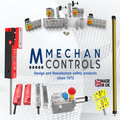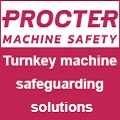
Posted to News on 9th Jul 2008, 13:15
DavyMarkham streamlines fabrication department
Moving house or office can be stressful enough, so imagine how daunting it would be to relocate an entire steel fabrication workshop, complete with heavy presses, bending and welding machines, CNC profile cutters and heat treatment areas - especially when the largest equipment weighs around 200 tonnes!

That was the sizeable task facing Sheffield-based heavy engineering company, DavyMarkham, when it took the decision to move its entire fabrication department from a separate on-site building to the main manufacturing works on Prince of Wales Road. The initiative to relocate was driven by the commercial objectives of streamlining production, reducing energy consumption and trimming costs, the whole process eventually taking around six months to complete. It was quite a logistical exercise too, since it involved utilising every square metre in the existing works, then scheduling craneage and the installation of new gas lines and tanks to get the workshop fully operational.
DavyMarkham's fabrication department has been engaged in many major projects over the years, including cutterheads for tunnel boring machines used on the Channel tunnel and a new Chinese contract, fabricating the main steel mast sections for Heathrow's latest air traffic control tower, building an interaction chamber for a high-intensity laser, and assembling mine hoists for the recovery of gold and nickel in North America. It is staffed by a team of highly skilled personnel, all of whom are apprentice-trained and hold a variety of technical, metallurgical and welding qualifications.
The need to reorganise
Until recently, the department was housed in a separate 6000m2 fabrication shop, but the cost of heating the building escalated during winter months, especially with rising energy prices, and moving large and heavy fabrications across to the adjacent machining bay for final finishing was time-consuming and complex. The welding bay's fume extraction system was also relatively inefficient, removing the discharged air without recovering the heat.
The space to accommodate the relocated facility was created by carrying out a critical appraisal of the entire main workshop, with two 100m x 20m bays eventually cleared of underutilised and redundant machine tools.
Technical Support Manager Paul Madin, who oversaw the entire relocation project, says: "Every piece of equipment that was retained in the works had to justify its continued existence commercially. If equipment could not add value to the business, now or in the foreseeable future, it had to go. We disposed of tonnes of fixtures and fittings as well as selling redundant machine tools."
With substantial machines and equipment like the 4m-wide Bronx bending rolls weighing in the region of 200 tonnes, the hydraulic press at 120 tonnes, eight fabrication assembly beds each weighing around 25 tonnes and several bending and forming machines at upwards of 10 tonnes each, considerable heavy lifting expertise was needed. Most heavy items were moved using the existing overhead cranes and the company's Vanguard diesel shunter, itself capable of pulling up to 1700 tonnes. However, a giant forklift with a 50-tonne capacity was brought in to dismantle the 500 tonne-capacity hydraulic press.
Fumes and gases
To introduce environmental benefits, there is now a newly-installed fume extraction system in the relocated fabrication shop, which uses the latest push-pull technology to filter the fume extract to better than 99 per cent efficiency and return warm filtered air to the bay, the collected metal particles being recycled with other scrap. BOC has also installed new gas lines and tanks to provide oxygen and propane for the profile burning machines and an argon/CO2 mixture to the welding equipment.
The finished layout of the new department has been thoroughly rationalised to minimise the movement of heavy fabrications and improve workflow between fabrication and machining bays, in line with MD Kevin Parkin's management ethos of streamlining production and eliminating cost where possible.
Kevin Parkin says: "On a site like this, which dates back to the 1920s, it was inevitable that residual inefficiencies would have crept in over the years. So this exercise has proved invaluable for cutting overheads and increasing our manufacturing competitiveness. Sometimes it is not about buying new equipment and adding extra floor space, it is about reutilising what you have got to optimum effect."
Want the latest machine building news straight to your inbox? Become a MachineBuilding member for free today >>

















